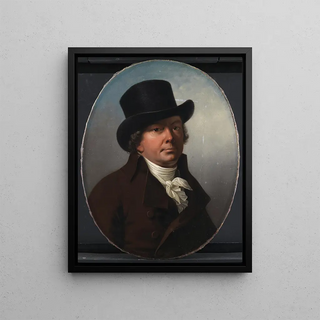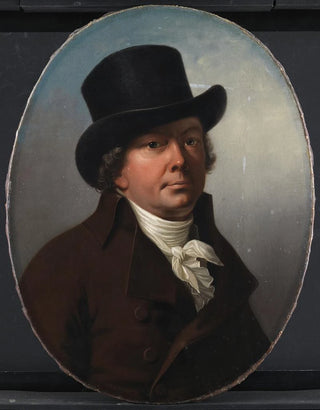Art print | Poul Johan Schouw director of the Osindien - Jens Juel


View from behind

Frame (optional)
Jens Juel's "Poul Johan Schouw, Director of the Osindien" is a masterpiece that transcends mere portraiture. Capturing the essence of a man who is both influential and charismatic, this painting bears witness to an era when art and science intertwined to shape perceptions of the world. Juel, a master of portrait art, manages to breathe vibrant life into his subject, making this artwork not only a visual representation but also a window into the mind of a man who left his mark on his time. The depth of exchanged gazes and the delicacy of details make this piece a true jewel in the history of art.
Style and uniqueness of the art print
Jens Juel's style is characterized by finesse and precision unique to him. In "Poul Johan Schouw, Director of the Osindien," light plays a crucial role, illuminating the face of the protagonist while creating shadows that add depth and three-dimensionality to the composition. The colors are carefully chosen, each hue contributing to the visual storytelling of the piece. The background, subtly worked, does not distract from the main subject but enriches it with harmonious contrast. This art print is a perfect illustration of 18th-century portrait art, where faithful representation of the model was paramount, while also hinting at a psychological dimension that invites viewers to ponder Schouw's personality.
The artist and his influence
Jens Juel, born in Denmark, is often regarded as one of the greatest portraitists of his time. His career is marked by a series of prestigious commissions that helped him establish a reputation on the European art scene. Juel does not merely reproduce faces; he captures the soul of his subjects, giving them an almost palpable presence. His influence extends beyond Danish borders, inspiring many contemporary and future artists to explore portraiture from a new perspective. By choosing to depict important figures of his era, Juel contributes to the construction of a collective memory, offering a valuable glimpse into the society of his time.
A wall decoration of

Matte finish

View from behind

Frame (optional)
Jens Juel's "Poul Johan Schouw, Director of the Osindien" is a masterpiece that transcends mere portraiture. Capturing the essence of a man who is both influential and charismatic, this painting bears witness to an era when art and science intertwined to shape perceptions of the world. Juel, a master of portrait art, manages to breathe vibrant life into his subject, making this artwork not only a visual representation but also a window into the mind of a man who left his mark on his time. The depth of exchanged gazes and the delicacy of details make this piece a true jewel in the history of art.
Style and uniqueness of the art print
Jens Juel's style is characterized by finesse and precision unique to him. In "Poul Johan Schouw, Director of the Osindien," light plays a crucial role, illuminating the face of the protagonist while creating shadows that add depth and three-dimensionality to the composition. The colors are carefully chosen, each hue contributing to the visual storytelling of the piece. The background, subtly worked, does not distract from the main subject but enriches it with harmonious contrast. This art print is a perfect illustration of 18th-century portrait art, where faithful representation of the model was paramount, while also hinting at a psychological dimension that invites viewers to ponder Schouw's personality.
The artist and his influence
Jens Juel, born in Denmark, is often regarded as one of the greatest portraitists of his time. His career is marked by a series of prestigious commissions that helped him establish a reputation on the European art scene. Juel does not merely reproduce faces; he captures the soul of his subjects, giving them an almost palpable presence. His influence extends beyond Danish borders, inspiring many contemporary and future artists to explore portraiture from a new perspective. By choosing to depict important figures of his era, Juel contributes to the construction of a collective memory, offering a valuable glimpse into the society of his time.
A wall decoration of






